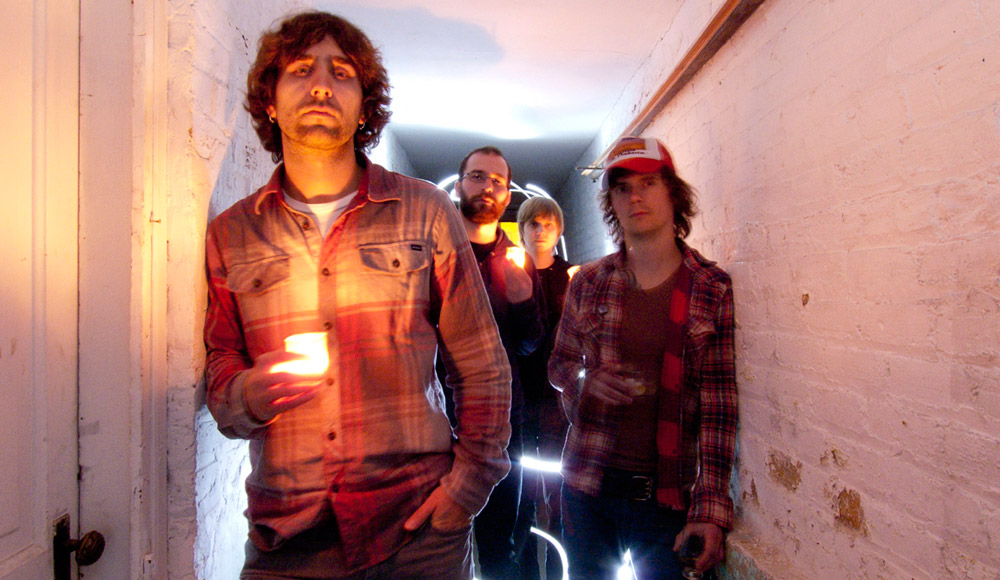This content appears in the iPad-exclusive ALARM 39. Download it for free and subscribe to our new print edition.
 Pelican: Ataraxia / Taraxis (Southern Lord, 4/10/12)
Pelican: Ataraxia / Taraxis (Southern Lord, 4/10/12)
“Lathe Biosas”
Ten years is a time frame in which anything can happen, especially in the music industry. Relationships begin and end, bands come and go, and trends begin and overturn, causing new heroes to rise and the kings of yesterday to be left in the shadows. But sometimes bands remain on top of their territory past this milestone and beyond.
Enter Chicago’s Pelican, whose ten-plus years on the circuit have taken it around the globe and left it in the higher ranks of post-metal acts. Though 2010 marked the band’s tin anniversary, 2012 is a year of progress, reflected in its new EP, Ataraxia / Taraxis.
Presently, the quartet is sprawled out in different parts of the country. This, as much as anything, contributed to the direction of the new compositions. The four-song release was composed and recorded in different studios across the map, with the help of engineers Sanford Parker and Aaron Harris, and after material was demoed back and forth via E-mail, the compositions were rerecorded.
“This definitely was an experiment,” guitarist Trevor de Brauw says. “We’re all working on different platforms. Some of us have an Ableton Live setup, and we’ve even utilized a Boss pocket recorder.”
As “Ataraxia” begins, listeners will hear a new side of the old veterans as soft electric piano and acoustic guitar weave a melancholy melody over a nest of feedback and gurgling electronics. Though Pelican never has been contrary to change (remember the 2009 track “Final Breath,” featuring vocals from Allen Epley of Shiner), it’s a fresh sound for the band’s catalog.
“When you break away from a traditional writing process, it’s easier to bring in different elements and try new things,” de Brauw says. “When we were writing, I was on a bit of a John Carpenter kick, so it may have rubbed off a bit.”
But just as listeners are lulled into a halcyon state, the recording bursts into life with “Lathe Biosas.” This track and the subsequent “Parasite Colony” were composed with the group all together, and they’re much closer to traditional Pelican material.
“Lathe Biosas” expands upon the chord progression that’s introduced in “Ataraxia” in a much more triumphant and powerful light. The pace is upbeat in comparison, and sturdy chord sections are sewn together as distorted melodies complete each other’s thoughts.
The closing track, “Taraxis,” is a hybrid of old and new, led by pitch-bending acoustic melodies that dance with a distant electric line. The sounds are familiar — even culminating in a sludgy outro — but they’re presented in an untried light, almost like a “Pelican unplugged” arrangement.
“‘Taraxis’ represents the biggest break from anything we’ve ever done before,” de Brauw says. “We’ve never recorded a full song where we haven’t all been present.”
Though the new material is a step away from yesterday’s path, its direction isn’t alien. De Brauw, in fact, describes Ataraxis / Taraxis as being comparable to prior releases but “a lot less optimistic.” The changes aren’t too drastic — just enough to pump some new blood through the system.
“We’ve continued to grow in our own way,” de Brauw says. “Although this is a Pelican release, I think it shows a different side of our ‘creative yang.’ There’s a lot there for fans of our music to take away from it.”

